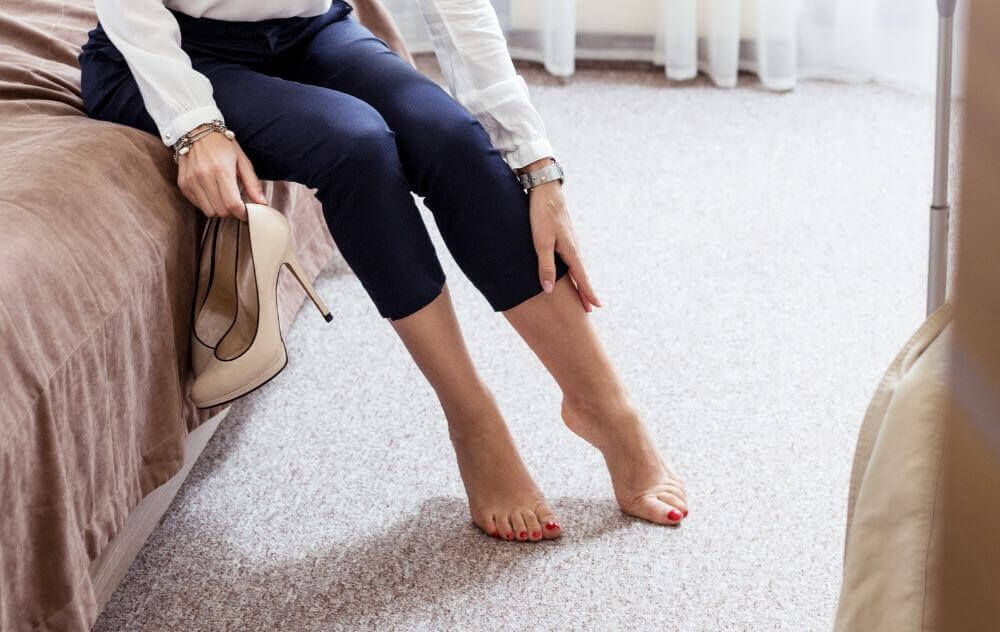Legs perform multiple kinds of movements during our mobile hours in which several types of muscles and joints are involved. Our leg divides into two categories, which separately describe every part’s functions and purposes. Lower leg and upper leg are two parts of our legs, which include hips, knees, ankles, foot, and thighs. All of these parts combine to make every movement possible for the leg otherwise because suddenly, even if one part gets injured or damaged, the leg functioning gets disturbed.
Now and then, our legs come to face multiple types of problems during their functioning, which is a widespread action to be found among people. Joint and foot pains, thigh stretch or numbness, inflammation in the back or front thigh, and many other leg problems happen due to different types of causes. We never know when our leg starts hurting in a specific area, and we may not come to understand the purpose of it either. Let’s look at some reasons that are commonly found among victims of leg issues.
Common causes found for leg problems
You get ready for your routine jog and start running around the block. After 10 minutes, you suddenly feel a cramp in your ankle and fall unconsciously. The fall makes it worse, and you get a fracture in your ankle joint. Leg problems can be very sudden and expected, especially for those who are active in sports and exercise.
Athletes, cricket, basketball, and football players are often reporting multiple types of injuries and fractures in their legs. We know our feet work the most while carrying our whole body in position and keep it balanced, that’s why it’s easier to face a leg problem now and then. Some of those problems are:
- Muscle weakness
- Feeling pain while getting up or sitting in knees and ankles
- Tingling or burning sensation in thighs or feet
- Joint dislocation
- Muscle weakness due to extreme pressure or extra use
- Sudden numbness and paralysis in leg
- Affected blood circulation due to sleeping in the wrong posture or keeping the legs upwards for too long
- Internal diseases
- Old age
- Genetic problems
A simple yet essential problem
We may have mentioned some of the primary yet common issues that are present in many individuals. Still, one question is known for being the most common yet essential problem that can make one worry over the leg immediately. The problem is an uneasy warm feeling in the leg that comes and goes with passage of time. How this problem occurs? Let’s find out:
It’s not vital to link every other problem with some scientifically proven disease or issue that inevitably connects the symptom. We don’t need to be scared every time we get a burning sensation in our leg. Sometimes, minor reasons are there to cause such troubling issues which do not require any severe doctor checkups. You only need to consult your doctor when your symptom becomes long term and worse that starts effecting your other limbs’ functioning.
Why do we feel a warm feeling that comes and goes in our leg?
A warm feeling that comes and goes in our leg may be a result of a muscle or a joint weakness that happens a few times a day. If a typical day to day worker who works in an office and sits most of his work time suddenly feels it while standing r moving, then it means his blood circulation was interrupted and swiftly worked up. If an athlete or an exerciser faces a problem, he may have exerted muscles too much, and the body is signaling him to rest. If an ordinary housewife comes to feel such feeling now and then in her leg, she is working nonstop while standing and walking around the house.
Keeping your legs in fixed one position also disrupts the blood circulation causing you to feel warm and cold all of a sudden but for a short time. Some exercise and stretches also pressure nerves conjoined in our thighs and lower legs that give a burning sensation after cooling down in a workout. So, a genuine opinion for such a problem will be to stay calm and focus on treating the feeling with some quick and adaptable tips on managing warm feeling in legs that comes and goes. Keep reading to learn about them.
- Give your legs some time to rest. Your legs may seem healthy but still need some time to recover the energy they spend. Put a soft pillow under your effected leg to calm the nerves.
- Try a quick pain killer with some warm milk to ease the feeling.
- Massage the areas with warm oil to help regulate blood circulation. If the feeling stays, try taking medication, and rest properly.
- Some useful pain-relieving gels for joints and muscles are readily available to apply that instantly calms the nerves and muscles. Try keeping one in your medicine box at all times.
- Try focusing on your weight if you are overweight or have gained recently; lose it to extend your leg’s life for your own sake. Pressure affects our body functioning a lot because if we reach out of the limit of our healthy weight, our body starts tiring itself to carry on with excessive fat. Keep your routine activities and add in some extra healthy meals instead of eating full stomach meals every day. Your weight will become automatically balance.
Legs before anything!
It’s obvious how much our legs need our attention, especially when we are using them regularly. Our body is our treasure as many cannot cherish such a blessing due to body dysfunction and other birth problems. So love yourself first and love your legs before you tire them out and start a bed life sooner than your time.
